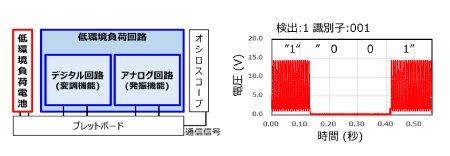強力なX線ビーム技術を用いて、歯磨き粉やヘアジェルのような柔らかい素材がどのような理由でリラックスしているのかを研究しています。この研究で得られた知見は、新しい消費財やナノテクノロジーの設計に役立ちます。 With a powerful X-ray beam technique, researchers explore what makes soft materials such as toothpaste and hair gel relax. The insights they’ve gained can aid in the design of new consumer products and nanotechnologies.
2022-10-10 アルゴンヌ国立研究所(ANL)
両研究が用いたX線ビーム技術は、X線光子相関分光法(XPCS)と呼ばれるものである。この技術により、さまざまな物質の形態や機能を分子や原子のスケールで調べることができる。
測定方法は、物質にX線ビームを照射する。X線が試料中の動く粒子に当たって跳ね返ると、X線の進行方向などの性質が変化する。研究者はこの変化を検出し、それを使って、材料中の粒子がさまざまな長さでどれくらいの速さで動いているかを計算し、構造のダイナミクスを知ることができる。
XPCS を使用した研究の 1 つが、アルゴンヌ研究所とマサチューセッツ工科大学(MIT)の科学者による米国科学アカデミー紀要に掲載された。
この研究では、ハイドロゲルの評価にこの技術が使用された。
ハイドロゲルのダイナミクスの全体像を把握するために、研究者達は、外部機械的ストレスがある場合とない場合のハイドロゲルのダイナミクスを探りました。これにより、材料における小規模な変化と大規模な変化の間の関連性が明らかになった。
ACS Nano 誌に掲載されたアルゴンヌ研究所、DOE のローレンスバークレー国立研究所(バークレーラボ)、マサチューセッツ大学(UMASS)アマーストの研究者による別の研究も、XPCS を利用してソフトマテリアルについて研究している。この場合、研究者は油と水の混合物を研究していた。
2つの液体の表面の間に、ナノ粒子と呼ばれる非常に微細な粒子を配置する。この場所では、粒子が詰まり、より密になり、結合して固体のような構造を形成する可能性があった。研究者たちは、XPCSを使用して、ジャミングが発生したときのダイナミクスを測定した。
<関連情報>
- https://www.anl.gov/article/through-thick-and-thin-xrays-track-the-behavior-of-soft-materials
- https://pubs.acs.org/doi/full/10.1021/acsnano.2c00020
- https://www.pnas.org/doi/10.1073/pnas.2201566119
水-油界面におけるナノ粒子集合体の緩和と経時変化 Relaxation and Aging of Nanosphere Assemblies at a Water–Oil Interface
Paul Y. Kim, Zachary Fink, Qingteng Zhang, Eric M. Dufresne, Suresh Narayanan, and Thomas P. Russell
ACS Nano Published:June 6, 2022
DOI:https://doi.org/10.1021/acsnano.2c00020

Abstract
The relaxation and aging of an assembly of spherical nanoparticles (NPs) at a water–oil interface are characterized in situ by grazing incidence X-ray photon correlation spectroscopy. The dynamics of the interfacial assembly is measured while the interface saturates with NPs. Weak attractions between NPs lead to gel-like structures in the assembly, where the in-plane ordering is inhibited by the broad size distribution of the NPs. Structural rearrangements on the length scale of the NP–NP center-to-center distances proceed by intermittent fluctuations instead of continuous cooperative motions. The coexistence of rapid and slow NP populations is confirmed, as commonly observed in soft glass-forming materials. Dynamics are increasingly slowed as the NPs initially segregate to the locally clustered interface. The structural relaxation of the NPs in these localized clusters is 5 orders of magnitude slower than that of free particles in the bulk. When the interface is nearly saturated, the time for relaxation increases suddenly due to the onset of local jamming, and the dynamics slow exponentially afterward until the system reaches collective jamming by cooperative rearrangements. This investigation provides insights into structural relaxations near the glass transition and the evolution of the structure and dynamics of the assemblies as they transition from an isotropic liquid to a dense disordered film.
拘束されたソフトマテリアルの応力緩和を支える微視的ダイナミクス Microscopic dynamics underlying the stress relaxation of arrested soft materials
Jake Song, Qingteng Zhang, Felipe de Quesada, Mehedi H. Rizvi, Joseph B. Tracy, Jan Ilavsky,Suresh Narayanan, Emanuela Del Gado, Robert L. Leheny , Niels Holten-Andersen and Gareth H. McKinley
Proceedings of the National Academy of Sciences Published:July 19, 2022
DOI:https://doi.org/10.1073/pnas.2201566119
Significance
The linear viscoelasticity of soft materials is governed by the microscopic thermal fluctuations of the underlying constituents in the system, which are expected to give rise to mono-exponential stress relaxation processes. However, many soft materials, such as glasses and gels, instead exhibit a broad distribution of stress relaxation times, for which the microscopic origin remains elusive. Here, we investigate the microscopic fluctuations inside an arrested gel and reveal the presence of two distinct microscopic relaxation mechanisms: quiescent relaxations governed by the buildup of internal stresses during arrest, and perturbation-induced avalanche relaxation events governed by mechanical deformations in the system. We show that both nonlinear relaxation mechanisms are essential components of nonexponential stress relaxation in arrested soft materials.
Abstract
Arrested soft materials such as gels and glasses exhibit a slow stress relaxation with a broad distribution of relaxation times in response to linear mechanical perturbations. Although this macroscopic stress relaxation is an essential feature in the application of arrested systems as structural materials, consumer products, foods, and biological materials, the microscopic origins of this relaxation remain poorly understood. Here, we elucidate the microscopic dynamics underlying the stress relaxation of such arrested soft materials under both quiescent and mechanically perturbed conditions through X-ray photon correlation spectroscopy. By studying the dynamics of a model associative gel system that undergoes dynamical arrest in the absence of aging effects, we show that the mean stress relaxation time measured from linear rheometry is directly correlated to the quiescent superdiffusive dynamics of the microscopic clusters, which are governed by a buildup of internal stresses during arrest. We also show that perturbing the system via small mechanical deformations can result in large intermittent fluctuations in the form of avalanches, which give rise to a broad non-Gaussian spectrum of relaxation modes at short times that is observed in stress relaxation measurements. These findings suggest that the linear viscoelastic stress relaxation in arrested soft materials may be governed by nonlinear phenomena involving an interplay of internal stress relaxations and perturbation-induced intermittent avalanches.


